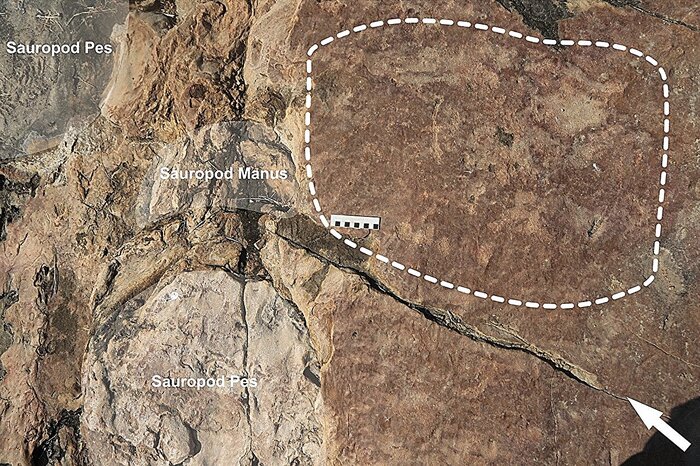Reconstruction of the 'Tamarro insperatus'
The name sounds weird for a dinosaur, and see that dinosaurs have weird names.
Tamarro insperatus
, now identified by fossils found in 2003 in Conca Dellà (Sant Romà d'Abella, Pallars Jussà, in northwestern Catalonia), is the new member that has joined the astonishing gallery of terrible lizards.
The animal, with an air between hen and velociraptor, according to the reconstruction that has been made, is a theropod (carnivorous dinosaur) manirraptor (“thief's hands”, due to its elongated arms and hands), from the group of troodontids, small dinosaurs feathered.
The group was widespread in North America and Asia, but was unknown until now in Europe, according to the researchers.
The thing about
insperatus
is because it was not expected to find it;
It is, in fact, the first carnivorous dinosaur from which a bone has been discovered in the Pyrenees, since the vast majority of remains attributed to theropods in the area were based on isolated teeth and, in this case, it is a long bone of the foot .
The most sympathetic thing is that of
Tamarro
.
The tamarro or gambosí is an imaginary creature of popular folklore well known in the Pallars area and mentioned by Joan Amades.
Present, according to the legends, also in Andorra, in the south of France and in different parts of Spain (where it is sometimes called gamusino), the tamarro does not have a specific physiognomy and its main characteristic is precisely that it is elusive, difficult to see .
A tradition linked to the tamarro, and which has given rise to traditions and festivals, is trying to find it.
The new dinosaur, the unexpected tamarro, is described in an article that appeared yesterday in the journal
Scientific Reports
-
A fast-growing basal troodontid (Dinosauria: Theropoda) from the latest Cretaceous of Europe
-, a team of researchers from the Institut Català de Paleontologia Miquel Crusafont (ICP), the Conca Dellà museum and the universities of Edinburgh (Scotland) and Alberta (Canada), led by Albert G. Sellés, from the ICP.
Tamarro insperatus,
its discoverers emphasize, joins the few known species of carnivorous dinosaurs in southwestern Europe.
The finding is also especially interesting that this dinosaur inhabited the area of the current Pyrenees 66 million years ago, just 200,000 years before the dinosaurs became extinct throughout the world.
Sellés highlights the scarcity of theropod fossils in Catalonia.
“A possible explanation”, he indicates in a note from the ICP, “could be that, as happens in current birds, with which they are the most closely related dinosaurs, the bones of the small theropod dinosaurs were hollow to lighten the weight of the animal.
This fragility would make it difficult to preserve and fossilize their skeletons ”.
The presence in the south of the Pyrenees of the theropod tamarro (which belongs, most probably, to the group of jinfengopterygids, of Asian origin), would reinforce the current hypothesis that at the end of the Cretaceous there were several migratory waves of dinosaurs from Asia to Europe.
From the microscopic analysis of the tamarro bones, the research team has been able to draw conclusions about the growth of the animal.
It increased in size very quickly, similar to how current palaeognathid birds do, such as the ostrich or the emu.
In just a couple of years, the tamarin could have reached its adult size, approximately 1.5-2 meters in length and about 20 kg in weight.
Most likely it was a scavenger dinosaur or a predator of small reptiles, mammals, and even insects.

/cloudfront-eu-central-1.images.arcpublishing.com/prisa/7NEYLM5BJNAL5I6CVD654JU4ZU.jpg)







